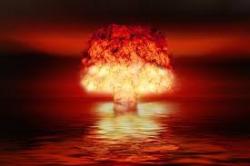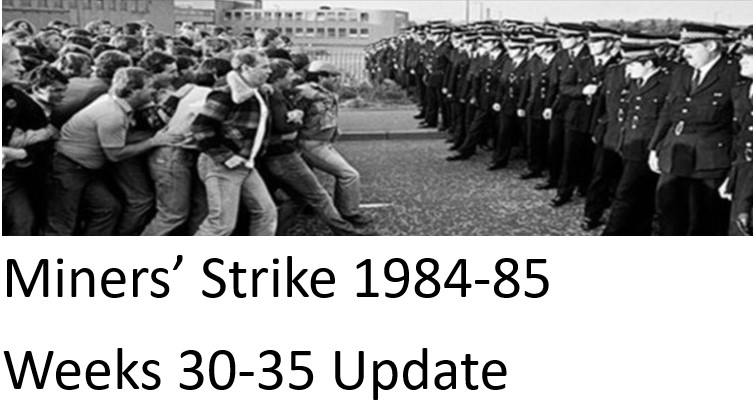By Mark Langabeer, Newton Abbot Labour member.
It is 75 years since the atomic bomb attacks on the cities of Hiroshima and Nagasaki in Japan. The Russian-sponsored TV channel RT recently broadcast a documentary that challenged the real reasons for the US use of atomic bomb at that time, suggesting that the motive, rather than ending the war more quickly, was to demonstrate US military power to Russia.
The programme interviewed Theodore Van Kirk, the navigator on the plane that dropped the first bomb on Hiroshima, who said that the aim was to ‘subdue’ the people of Japan. Back then, he said, the popular feeling was that the Japanese were not ‘nice’ people. Likewise, Richard Rhodes, a Pulitzer-prize winner, argued that an invasion of Japan would have cost half a million American lives, and that this was the reason given to justify the bombing.
But the documentary cast doubts about this claim and argued that it was more about demonstrating US military power at the end of the war. By August 1945, the USA was already using conventional bombing raids – its bombers virtually unhindered by Japanese aircraft – to flatten Japanese cities. The reason why Hiroshima was the site of the first atomic bomb was that the capital city, Tokyo, had already been destroyed five months earlier.
Tokyo destroyed five months earlier
The bombing of Tokyo on the night of March 9/10, was up to that time the single most destructive bombing raid in human history. Sixteen square miles (10,000 acres) of central Tokyo were destroyed, leaving an estimated 100,000 civilians dead and over one million homeless. It made no difference to the tens of thousands of dead in the cities of Tokyo and Hiroshima whether they’d been killed by ‘conventional’ or ‘atomic’ bombs.
It was later in that summer that Harry Truman, the US President gave the order to use the new A-bomb, saying, according to RT, that he’d have “a stick” to show the Russians his strength and power. Truman also said that the A-bomb was the “greatest organised scientific endeavour in history”. This comment sums up the outlook of the likes of Truman and those who supported the atomic bombing of Japan.
Peter Kusnick, the Director of the Nuclear Studies Institute at American University argued that Truman’s strategy was two-fold, to force Japan to surrender and to prevent the USSR from securing a foothold in the Pacific region. By that time the USA would have been aware of the Red Army making rapid advances eastwards across Manchuria, pushing Japanese forces out. The bomb, therefore, was sending an important message to Stalin.
Not necessary militarily
Kusnick argued that six out of seven 5-star US generals and admirals at the time regarded the use of the atom bomb as either unnecessary from a military perspective or morally reprehensible. The US blockade of Japan had already meant that they were already running out of food and fuel and the scheduled invasion plan wasn’t set until November. Given the blockade and the fire-bombing of cities by conventional means, It was likely that Japan would have surrendered in any case and this lends weight to the view that Truman’s decision to use the A-bomb was more about sending a message to the USSR.
Sensing victory, the Second World War allies had met at Potsdam to discuss the post-war world. Truman had not told Stalin about the A-bomb, then under construction, but archives suggest that Stalin knew in broad terms about its development, thanks to the intelligence services of the USSR. Archives also suggest that the US were developing detailed plans to bomb cities in the USSR, in the event of war between the ‘East’ and the ‘West’, once the Nazis were beaten, but within two years the USSR also tested their own atomic bomb and there was stalemate. Relations between the two super- powers deteriorated and this period marked the beginnings of the Cold War, during which time these two great military powers built up massive nuclear arsenals capable of destroying the whole of humanity hundreds of times over.
Health care of victims continues today
The effects of the atomic bomb still remain. Over 300,000 died as a result of the two attacks and survivors who suffered from radiation sickness or mental health problems still receive monthly healthcare payments today. One of them, Sumiteru Taniguchi, who was 16 years old at the time, had been just over a mile from the epicentre of the blast at Nagasaki. He spent three years and nine months in hospital because of the burns he suffered.
He has become a symbol for the victims of the bombings and an active campaigner against nuclear weapons. He was the Chair of the Nagasaki Council of A- bomb sufferers and helped to set up a movement against nuclear bombs in 1959. No US Presidents since Truman have gone to the memorial of the A-bomb victims to pay their respects. No apology has ever been given to the victims. That, by itself, in my view, is a crime.
August 10, 2020



